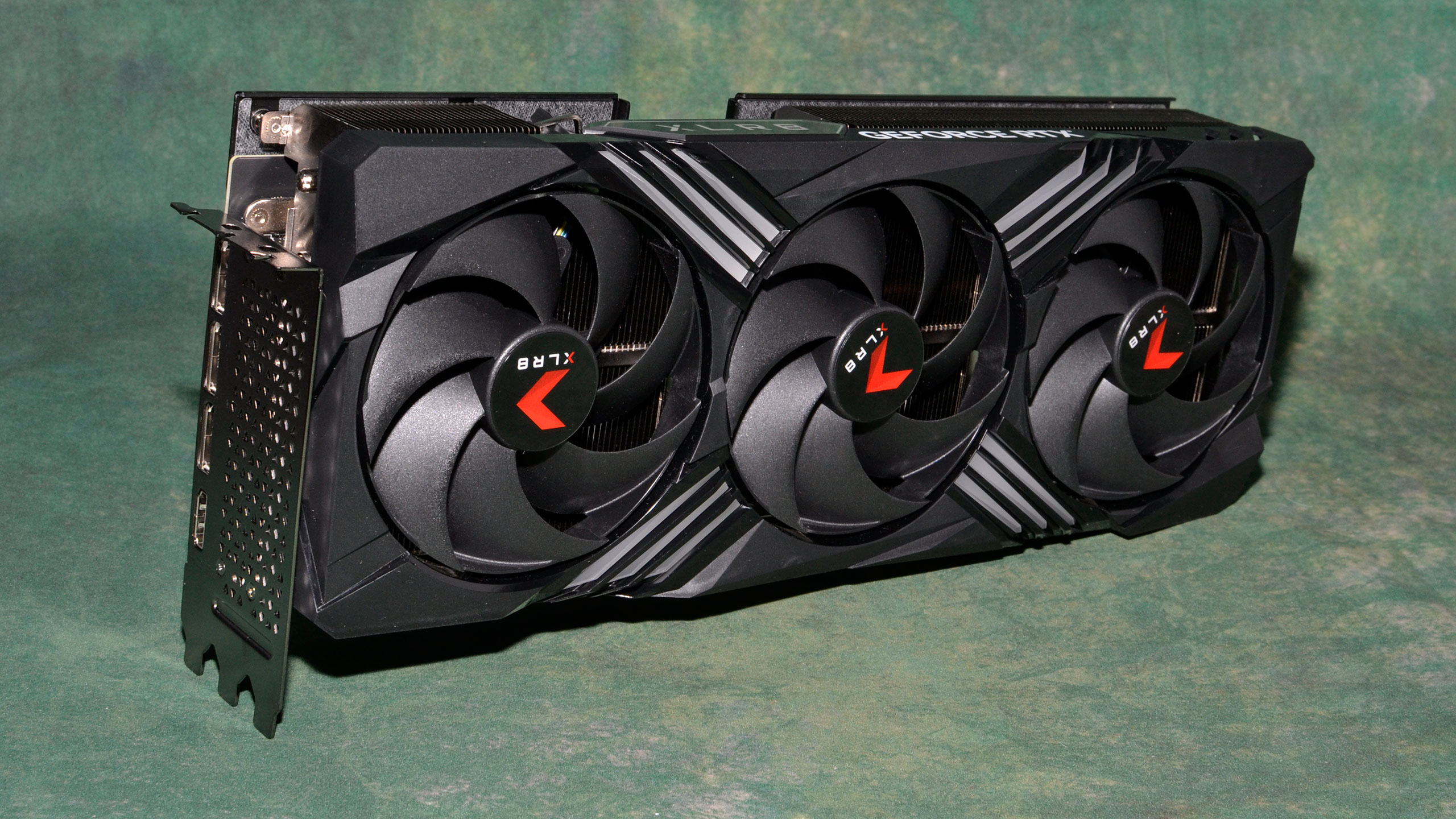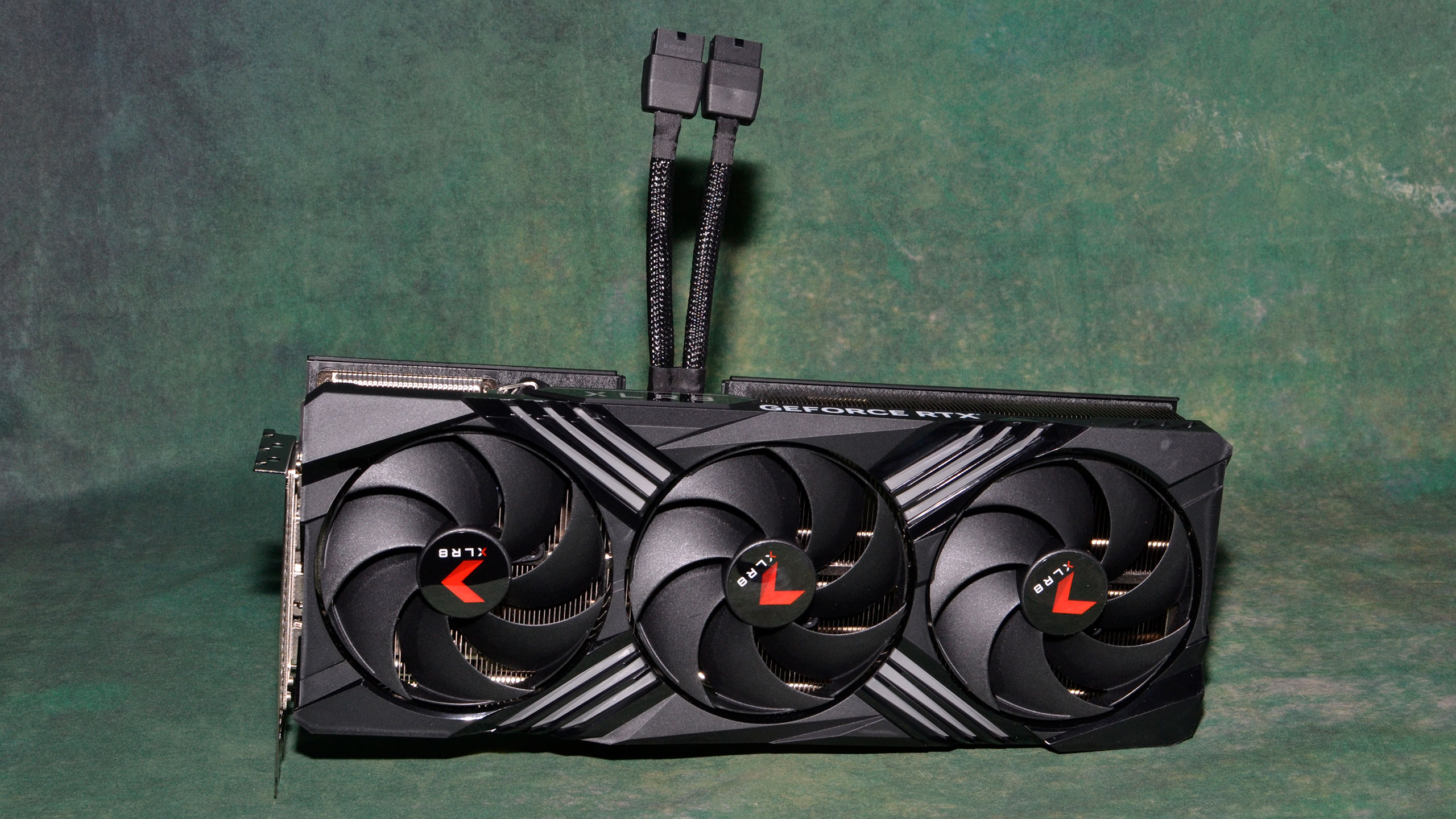Why you can trust Tom's Hardware
Our graphics card test PC uses an Nvidia PCAT v2 device, and we've switched from the Powenetics hardware and software we've previously used to Nvidia PCAT, as it gives us far more data without the need to run separate tests. PCAT with FrameView allows us to capture power, temperature, and GPU clocks from our full gaming suite — along with the usual frame times. The charts below are the geometric mean across all 15 games, though we also have full tables showing the individual results further down the page.
The raw performance data in the games can sometimes be interesting, particularly when we're looking at a brand-new GPU. For these third-party card reviews, however, outside of aesthetics we find the noise and temperature results to be the most useful information we can glean from all the testing.
We have separate charts for 1080p medium/ultra, 1440p ultra, and 4K ultra in the galleries below. While the Asus and PNY 4070 Ti Super cards were very close in frames per second, we start to see a bit more differentiation in the other aspects of the cards.
PNY RTX 4070 Ti Super Verto OC Power Use
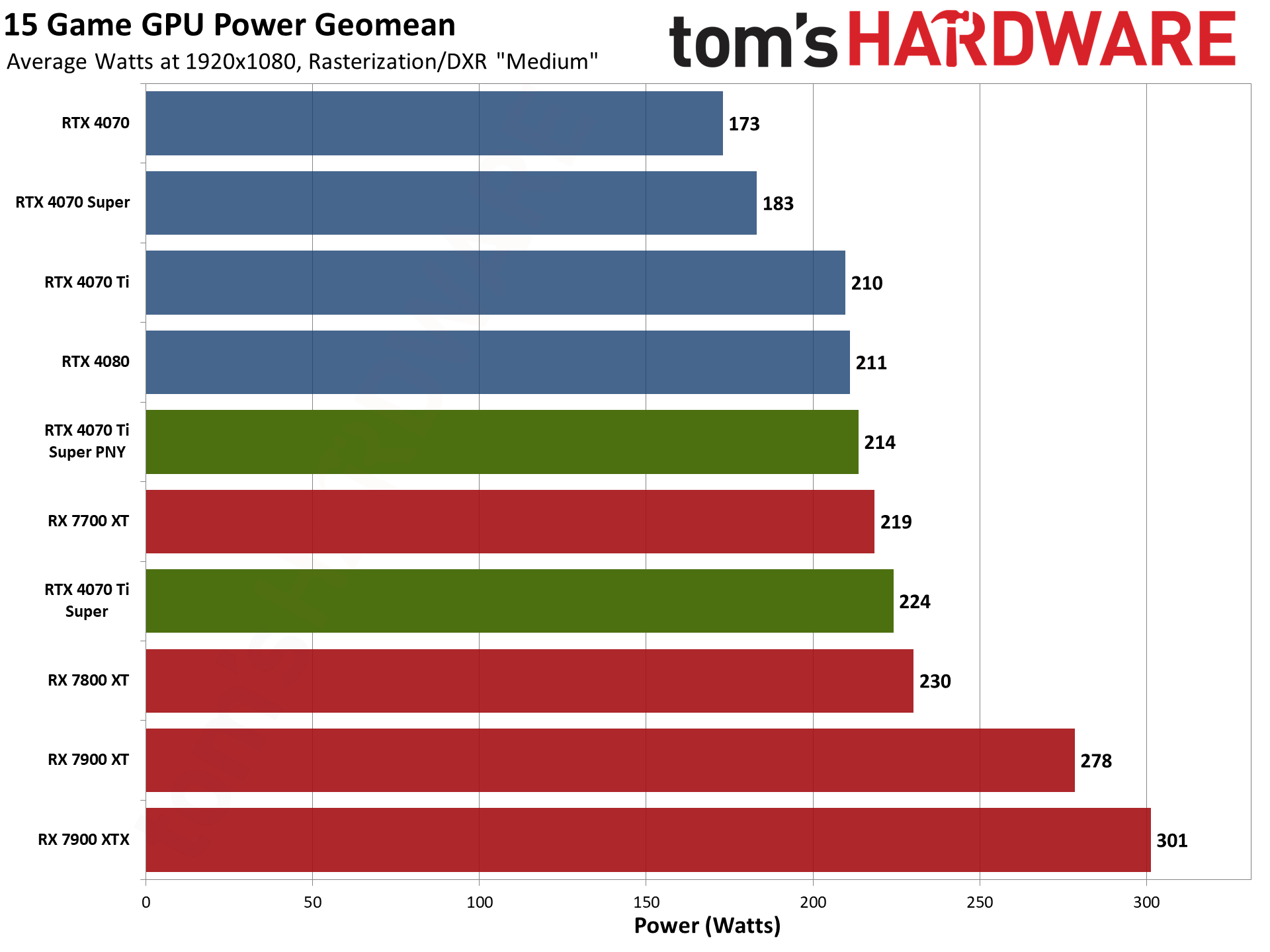
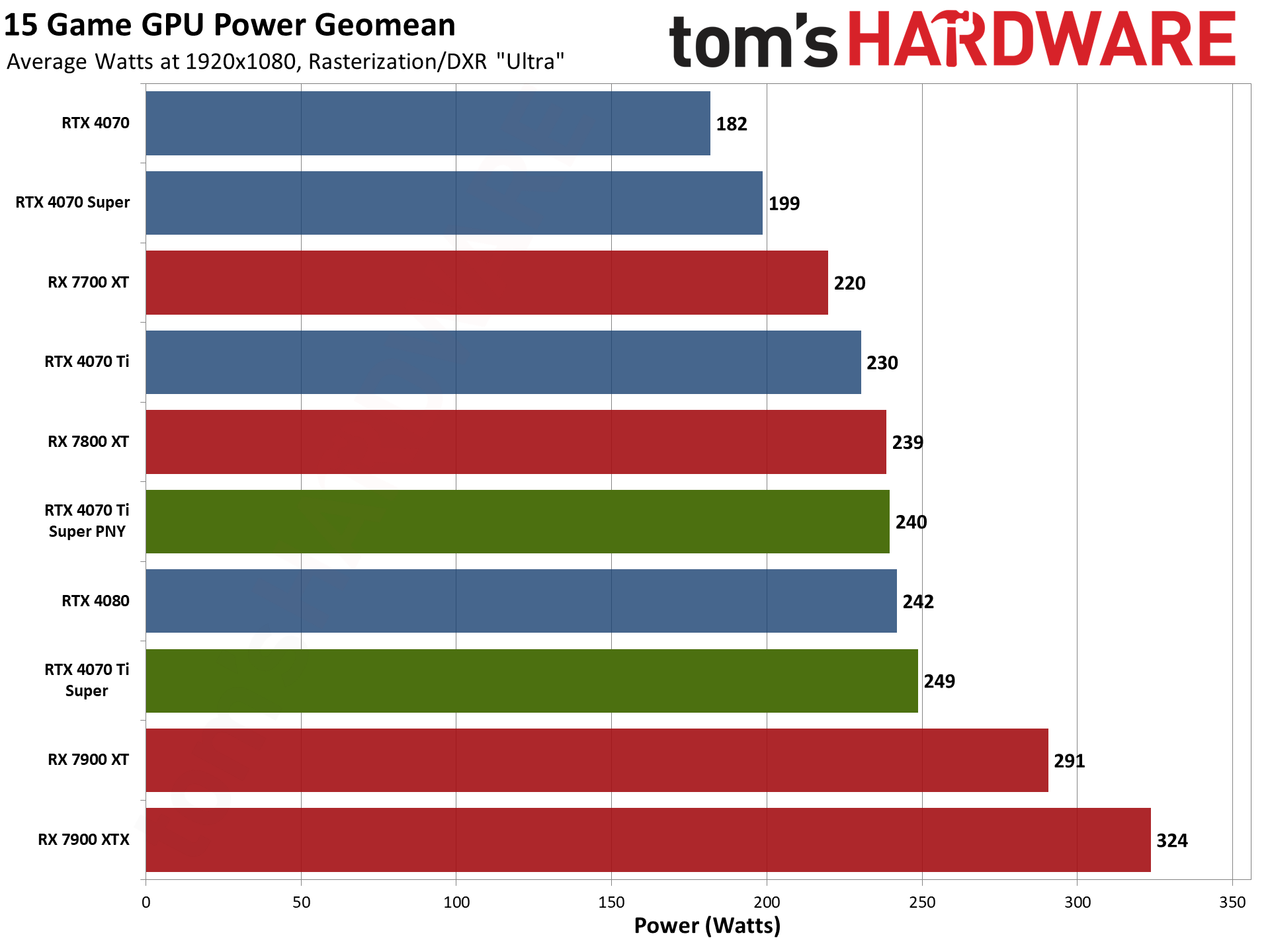
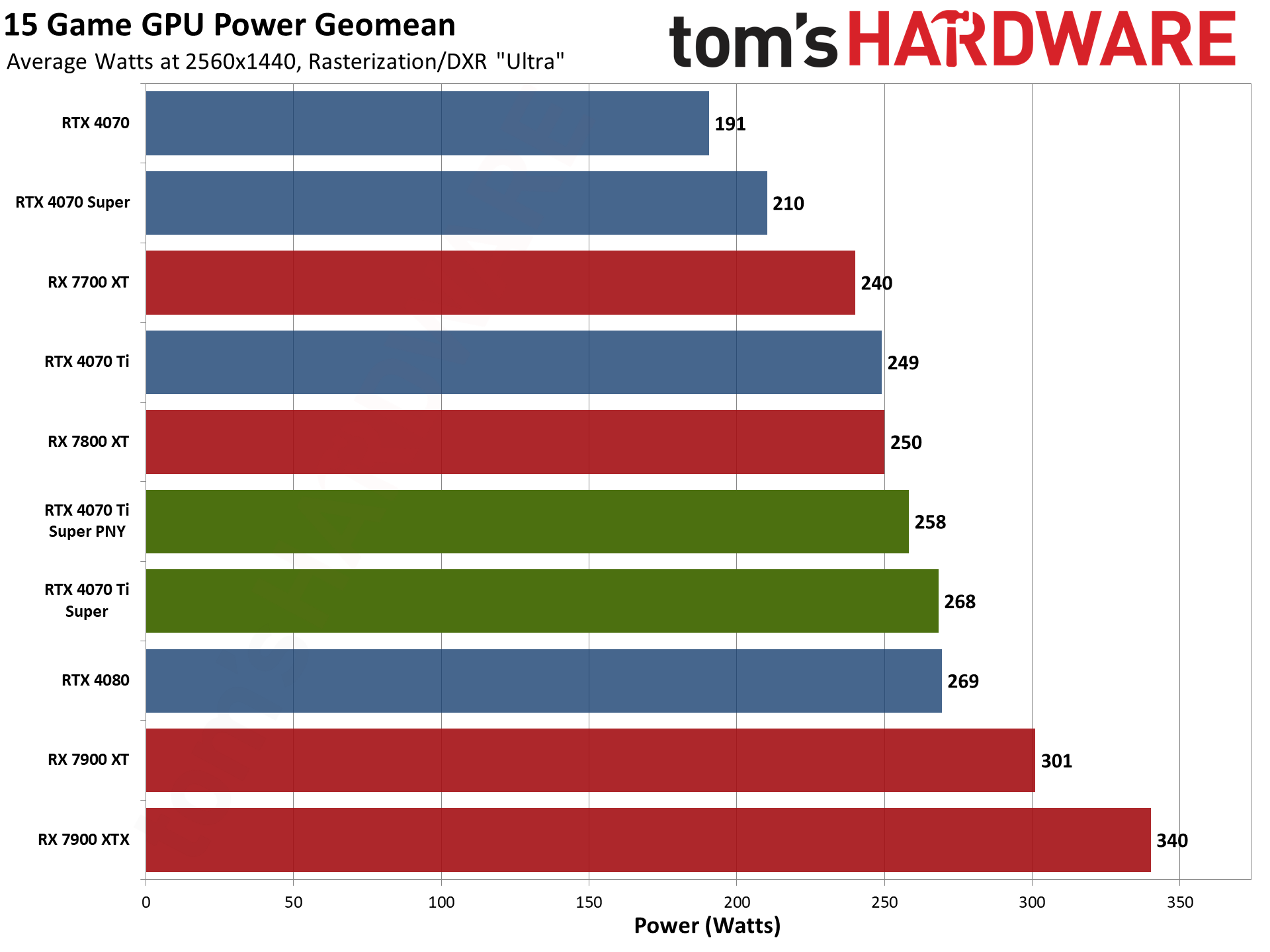
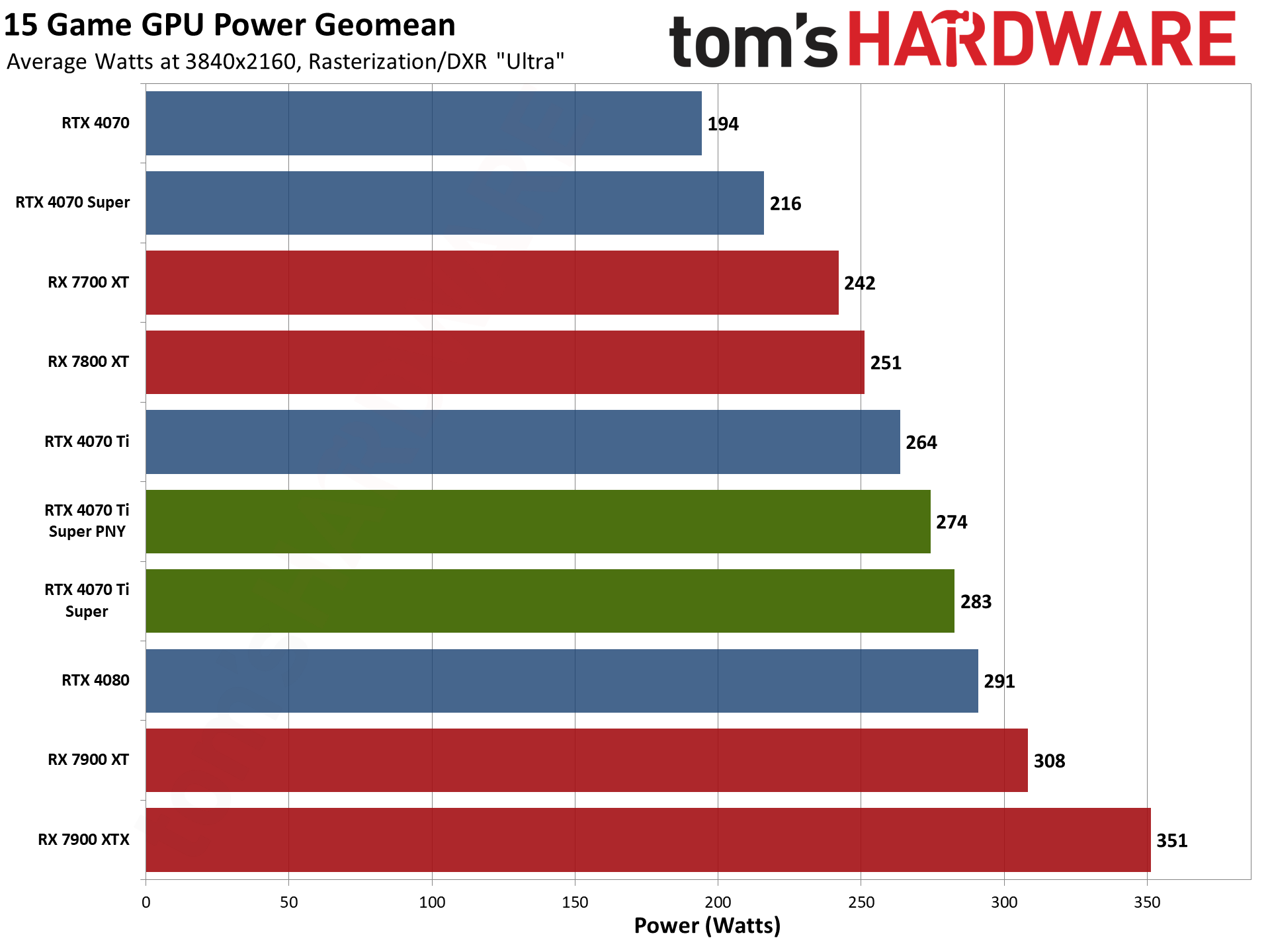
PNY's slight factory overclock at least partly explains the performance difference, but what's also interesting is that it's able to provide that slightly higher performance while using less power. Temperatures can and do impact power use a bit, but overall the key takeaway is that PNY's Verto OC averaged 9–10 watts less across all four test resolutions/settings.
That's a 3.2% to 4.5% reduction in power use, with about a 2% increase in performance, meaning overall efficiency (FPS/W) improves by about 6%. That's not a massive increase, but it's still measurable and interesting, especially when you consider there's quite a bit more RGB lighting on the PNY card.
Better efficiency and lower power use should mean less noise as well, but let's check the other aspects first.
PNY RTX 4070 Ti Super Verto OC Clock Speeds
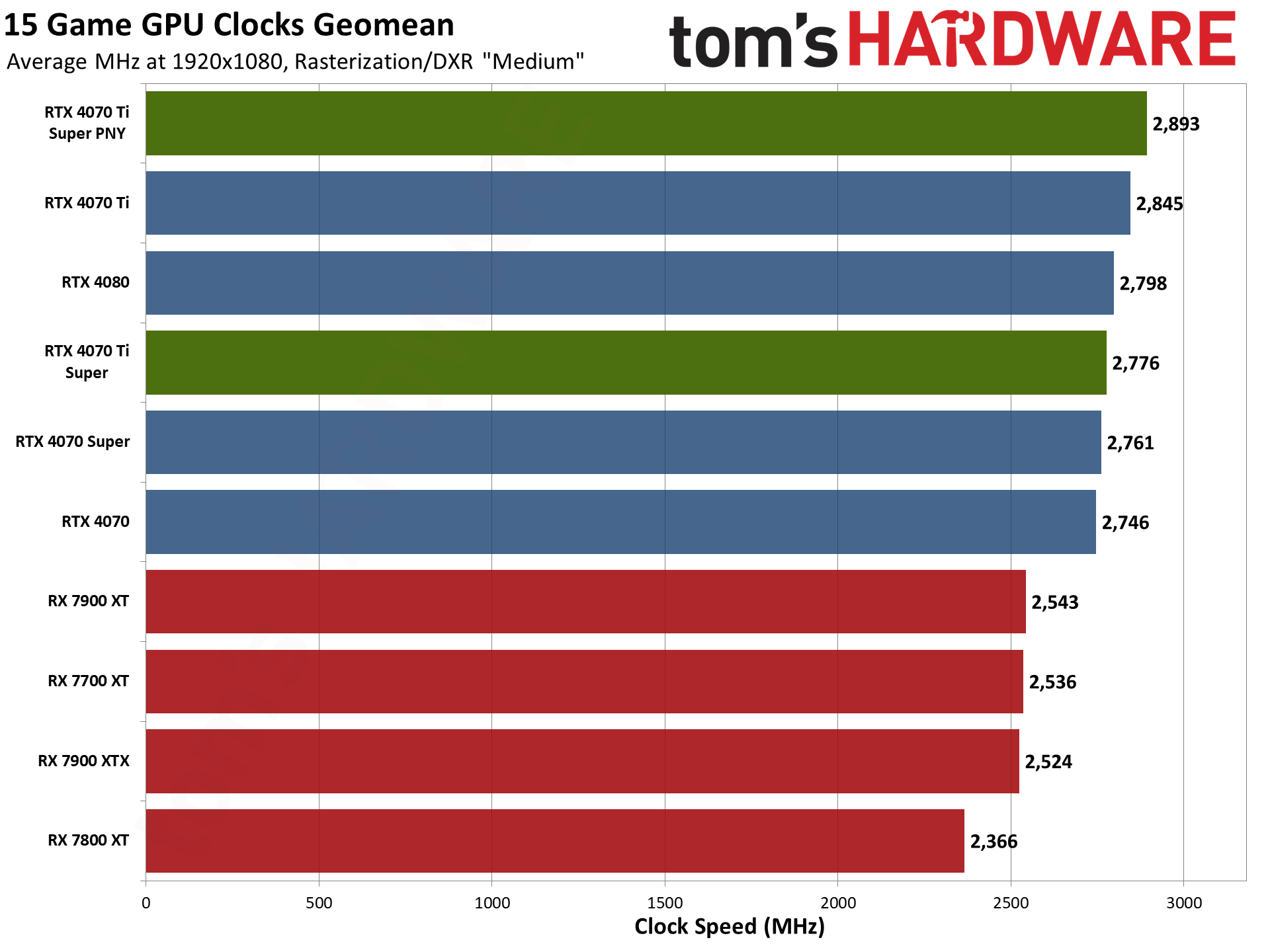
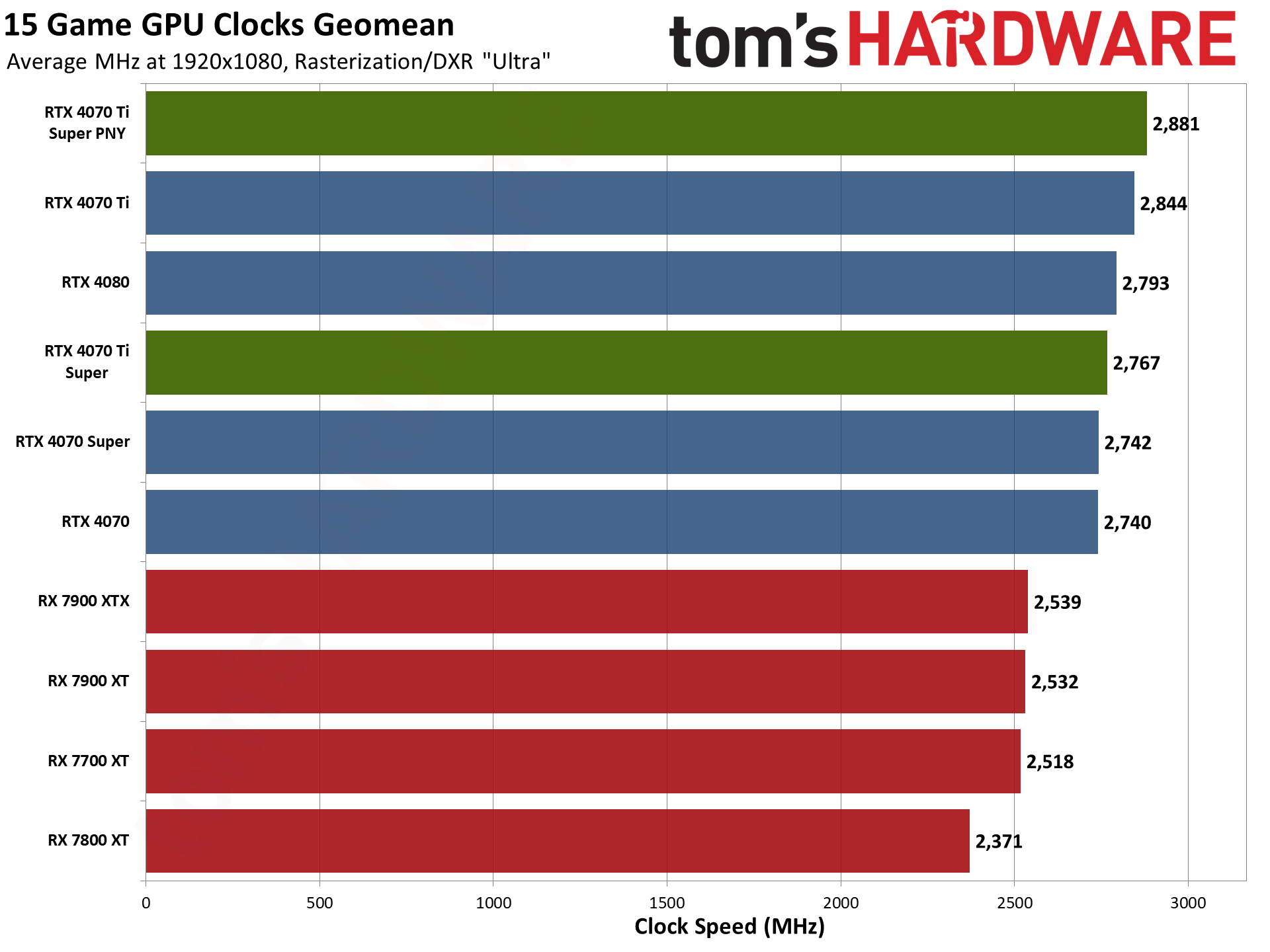
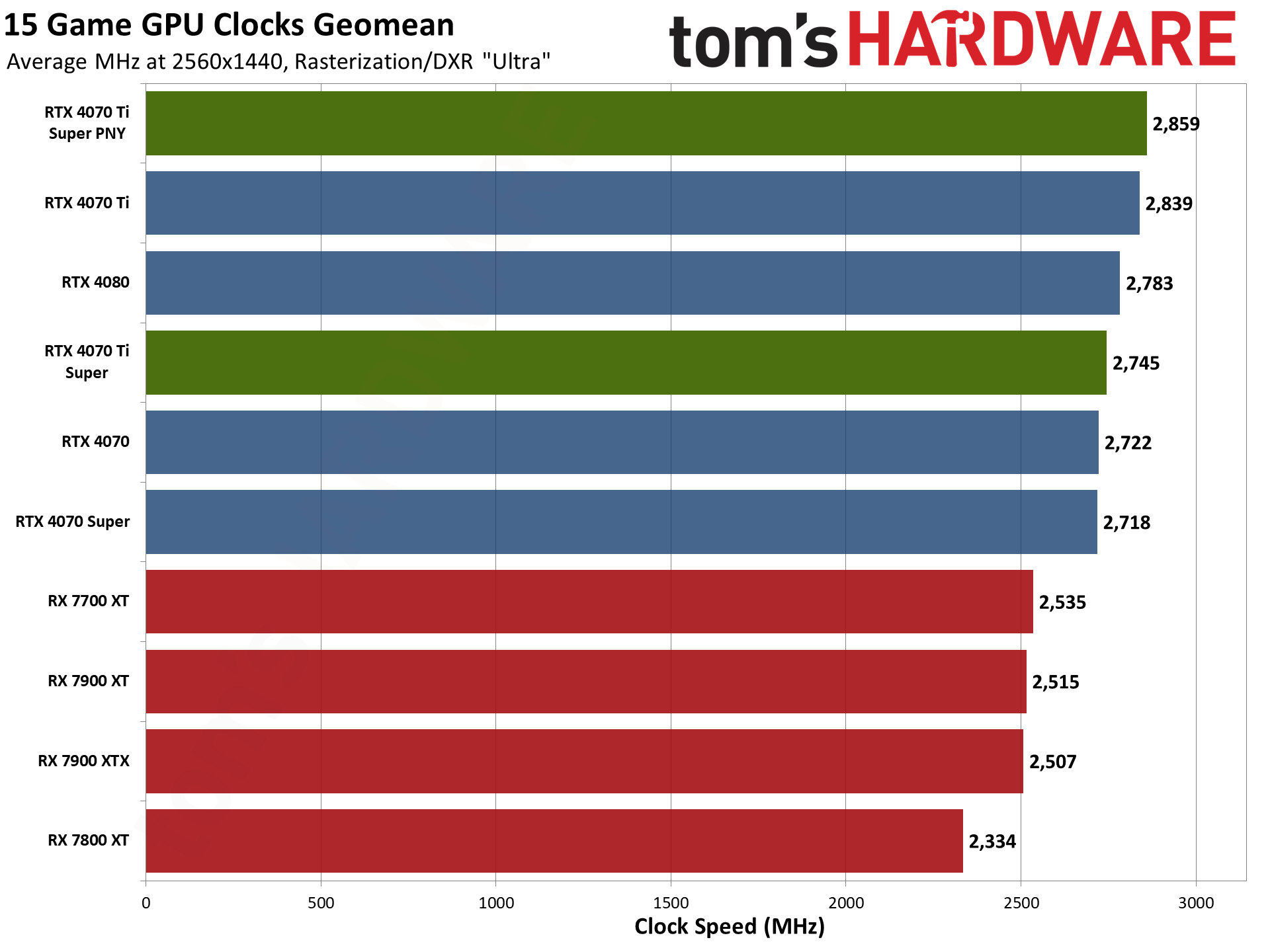
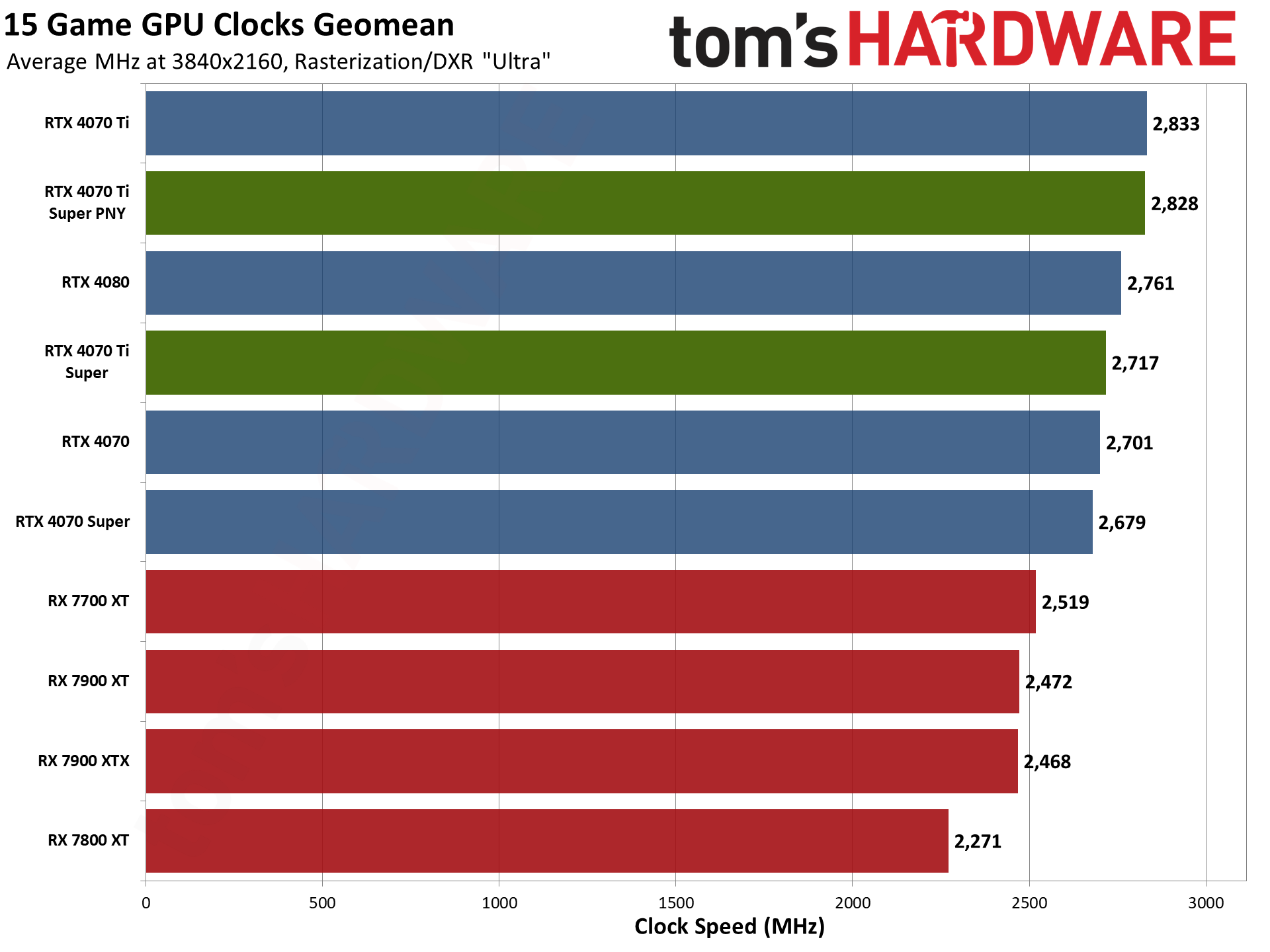
The official boost clock on the RTX 4070 Ti Super is 2610 MHz, and the PNY card has a 2655 MHz boost clock. That's a 1.7% increase, which basically matches the performance changes we measured, but there's a bit more to it than stated boost clocks.
Looking at the real-world clocks, depending on the resolution/setting, the PNY card averaged 2828–2893 MHz while the Asus card averaged 2717–2776 MHz. That would work out to a 4% advantage in theory, but CPU, memory, and system bottlenecks are still a factor.
PNY RTX 4070 Ti Super Verto OC Temperatures
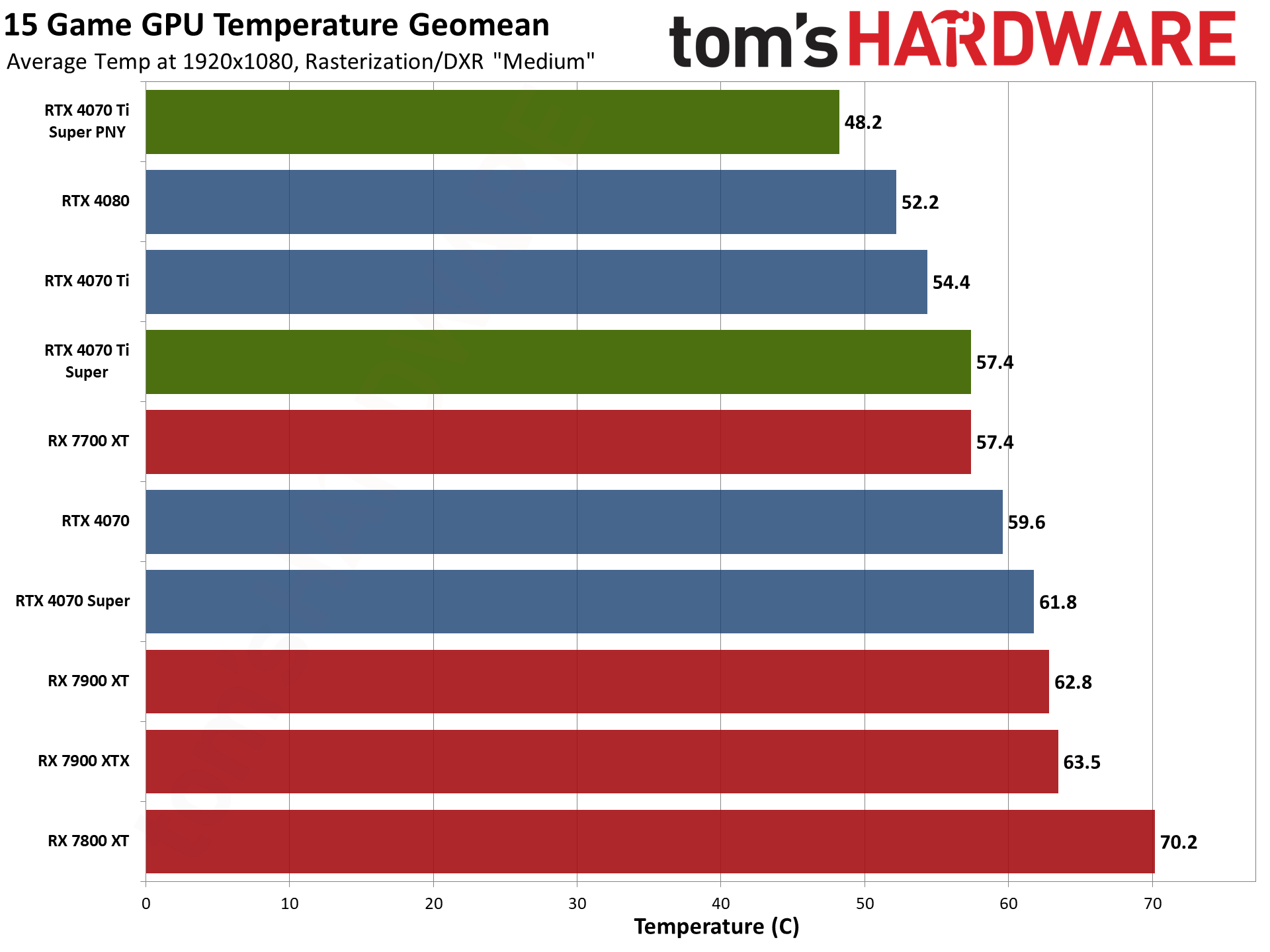
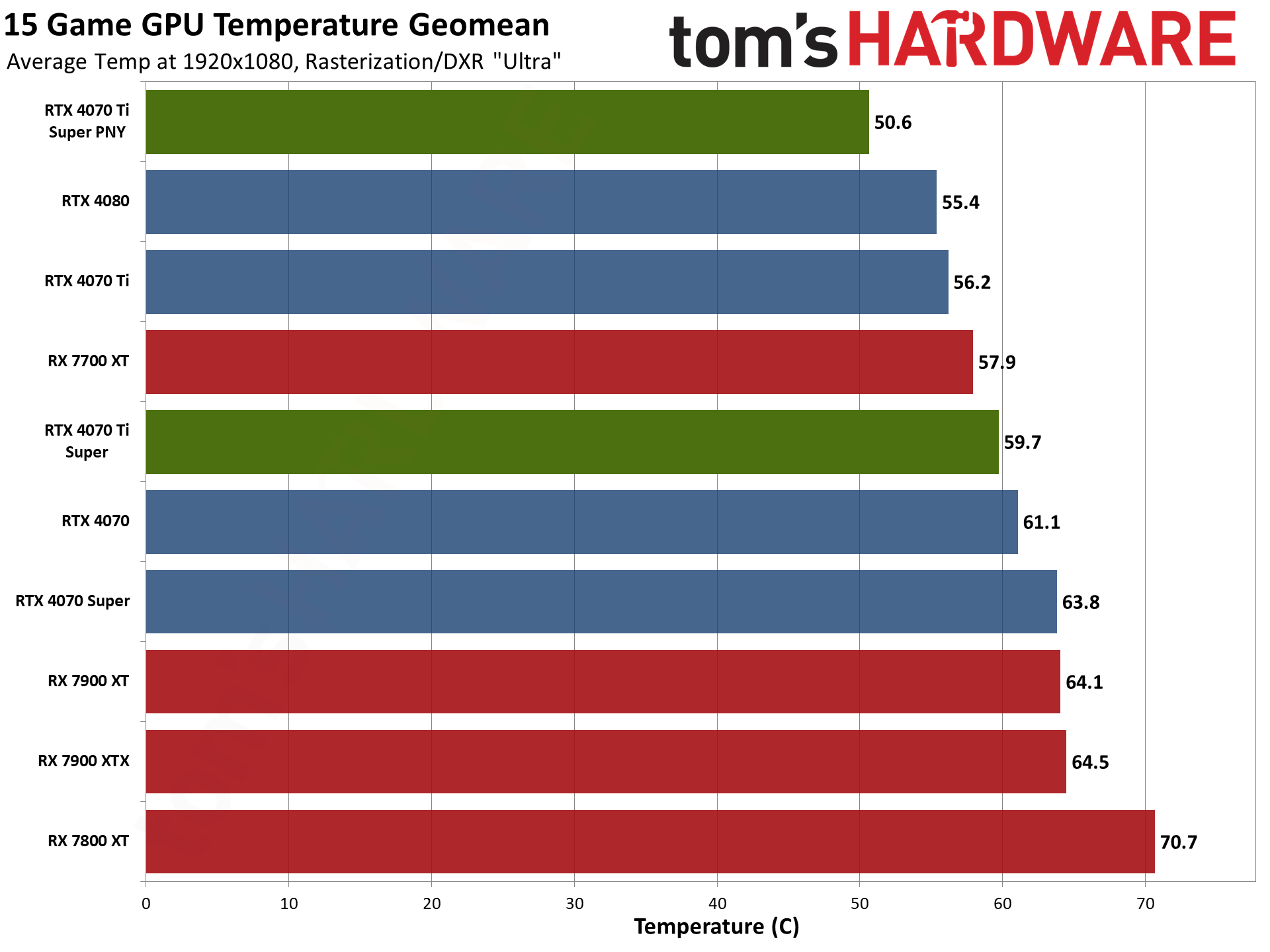
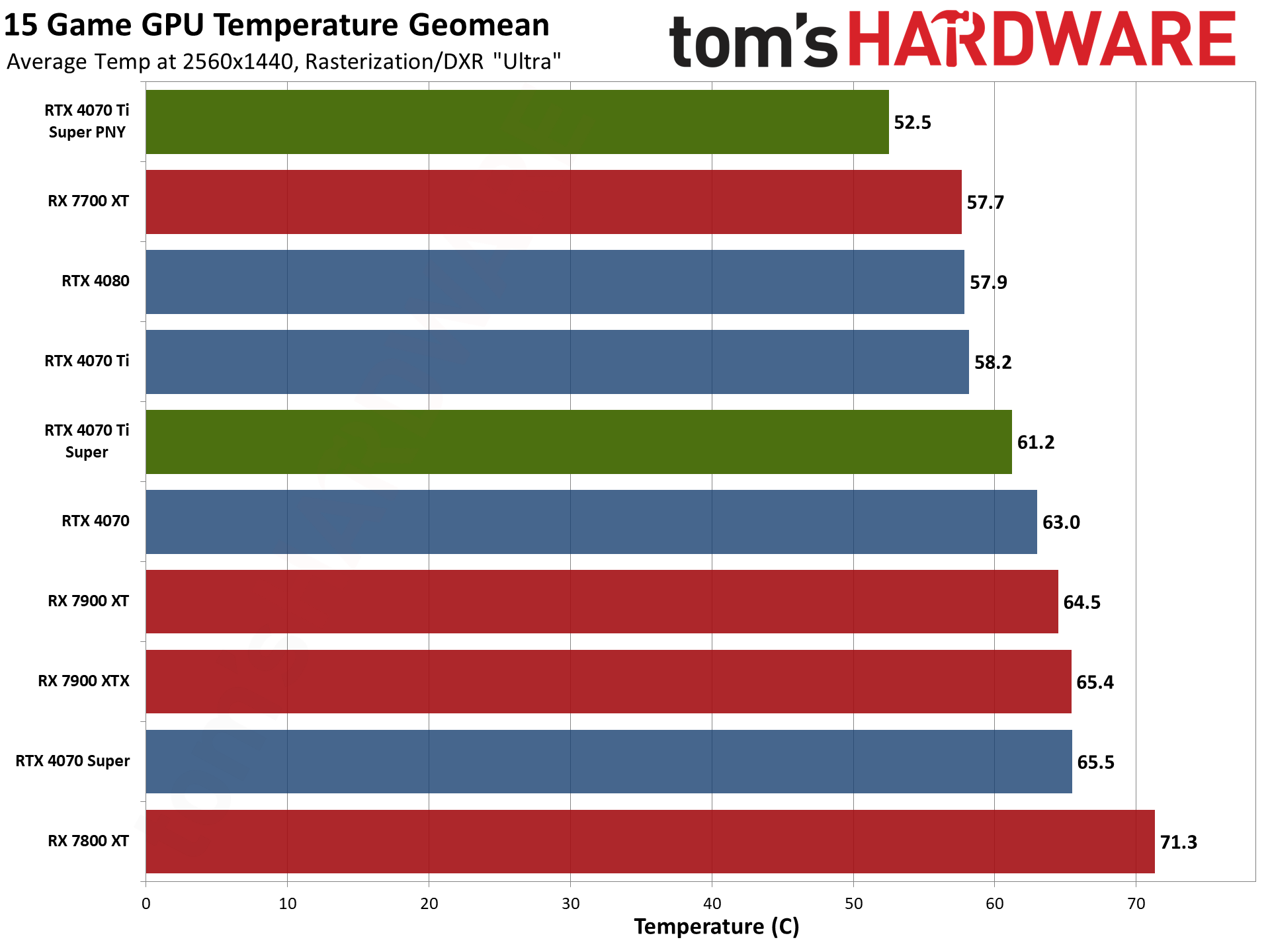
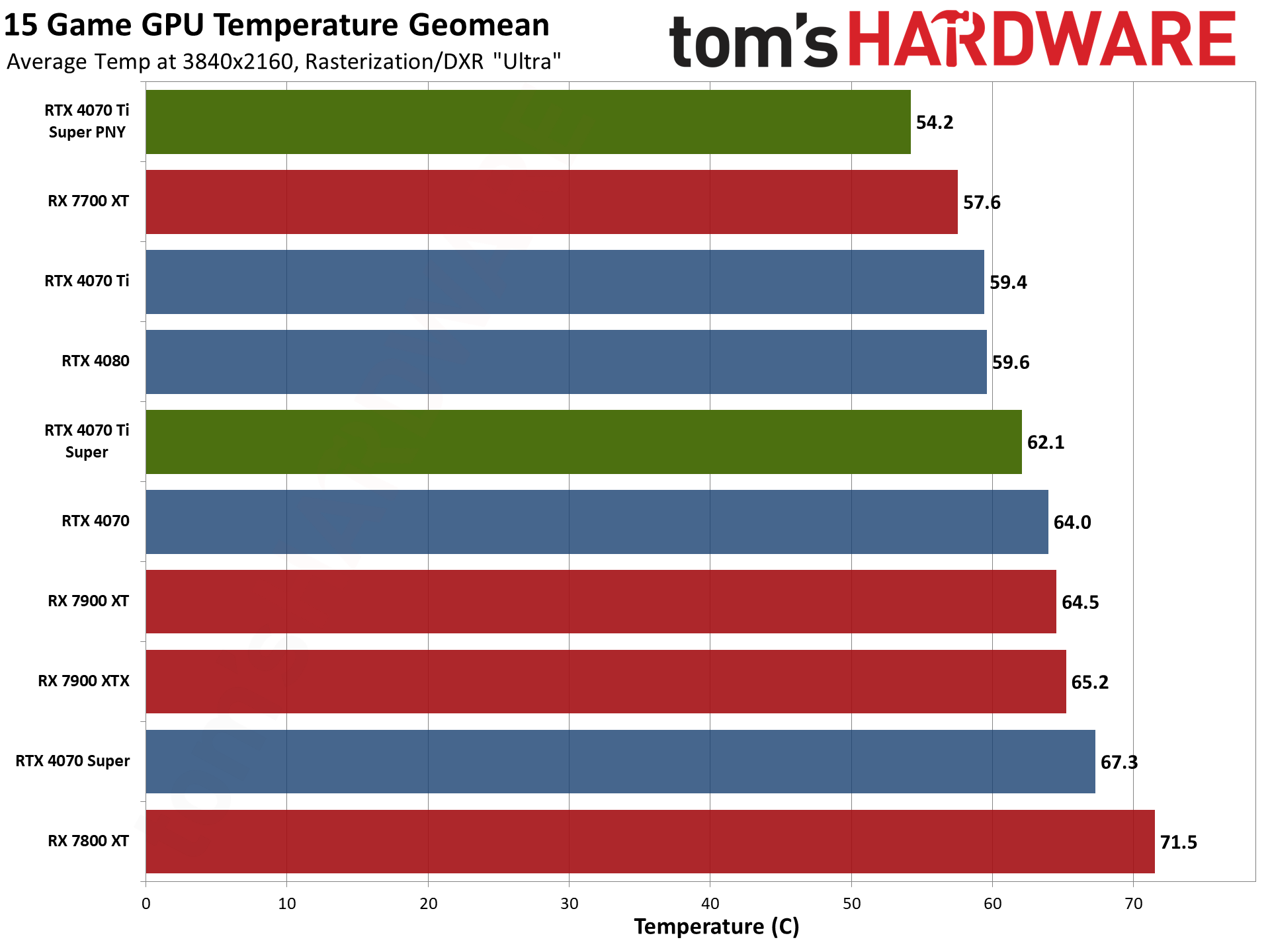
One area where the PNY Verto OC excels that we've already hinted at is its temperatures. Large coolers and large fans produce lower temperatures? Shocking! But even if it seems like a relatively simple approach, average temps on the PNY ranged from just 48C at 1080p medium to 54C at 4K ultra. More importantly, that's about 9C lower than the Asus card that uses the same GPU and runs at slightly lower clocks.
These really are exceptional cooling results, considering the 285W power limit. Across our entire test suite, we never saw the GPU average more than 57C in any of the games. But it's not just about the temperatures, as we also need to check noise levels.
PNY RTX 4070 Ti Super Verto OC Noise Levels

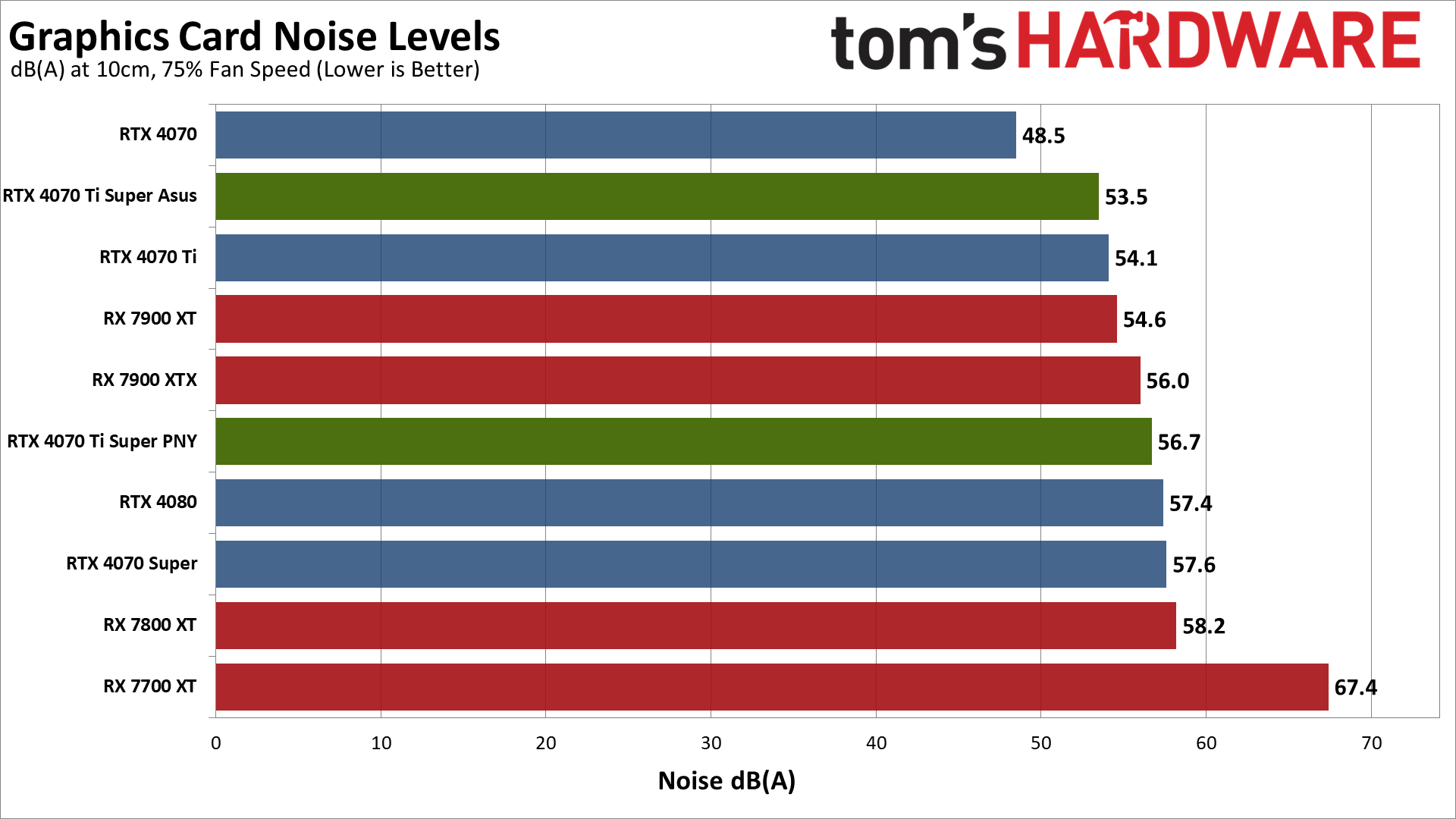
The PNY Verto OC ends up just slightly quieter than the Asus card, which is good to see. Spinning fans at higher RPMs in order to get lower temperatures isn't a great tradeoff. It's not a silent card, but 40–41 dB(A) at a close range isn't very loud either. This was with a fan speed of 30%, which brings up something more to discuss.
One slight oddity, if you want to call it that, is that the PNY fans go from off to 30% once the GPU gets above about 40C. We've seen other cards where the minimum fan speed is 20%, which means they can tune for lower noise if desired while still keeping thermals in check. Even with overclocking software, we were unable to set the PNY fans below 30%. So, the overall noise levels while gaming are good, but in lighter workloads, the card will be just as loud as while gaming.
We also tested with a static fan speed of 75%, which resulted in the PNY card generating 56.7 dB(A) of noise. That's very noticeable, but it's also very unlikely you'd ever get the card hot enough to need such a high fan speed. Even in warmer climates, we suspect the fan will still be able to run at 30–40 percent while keeping the GPU below 70C — unless you're gaming in a room that's over 40C, I suppose, but that's not something I would ever recommend doing.
Our noise test consists of running Metro Exodus, because it's one of the more power hungry games. We load a save, with graphics set to appropriately strenuous levels (4K ultra in this case), and then let the game sit for at least 15 minutes before checking noise levels. We place the SPL (sound pressure level) meter 10cm from the card, with the mic aimed at the center of the middle fan (or the center of the rear fan if there are only two fans). This helps minimize the impact of other noise sources, like the fans on the CPU cooler. The noise floor of our test environment and equipment is around 31–32 dB(A).
Full Gaming Test Results
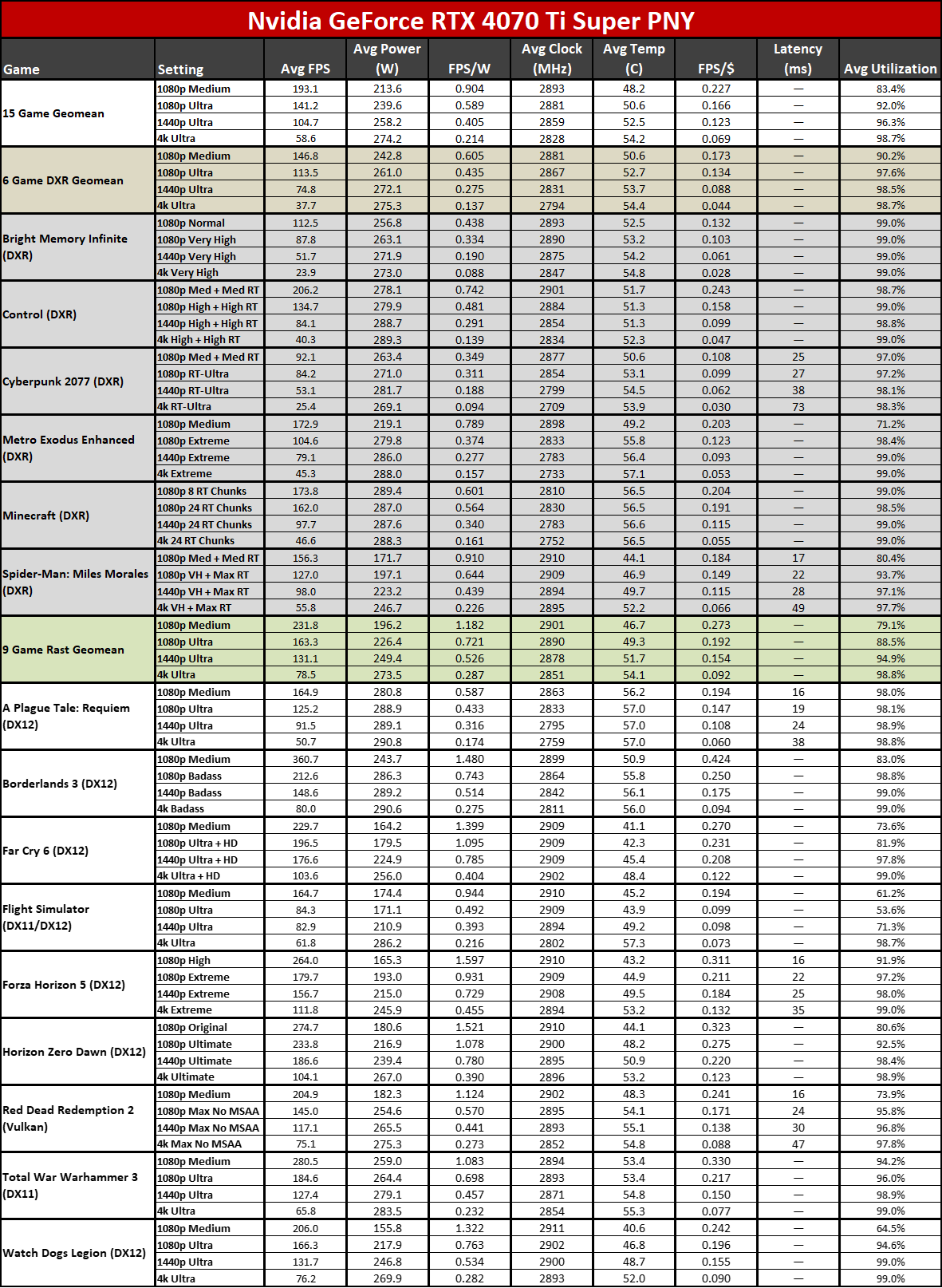
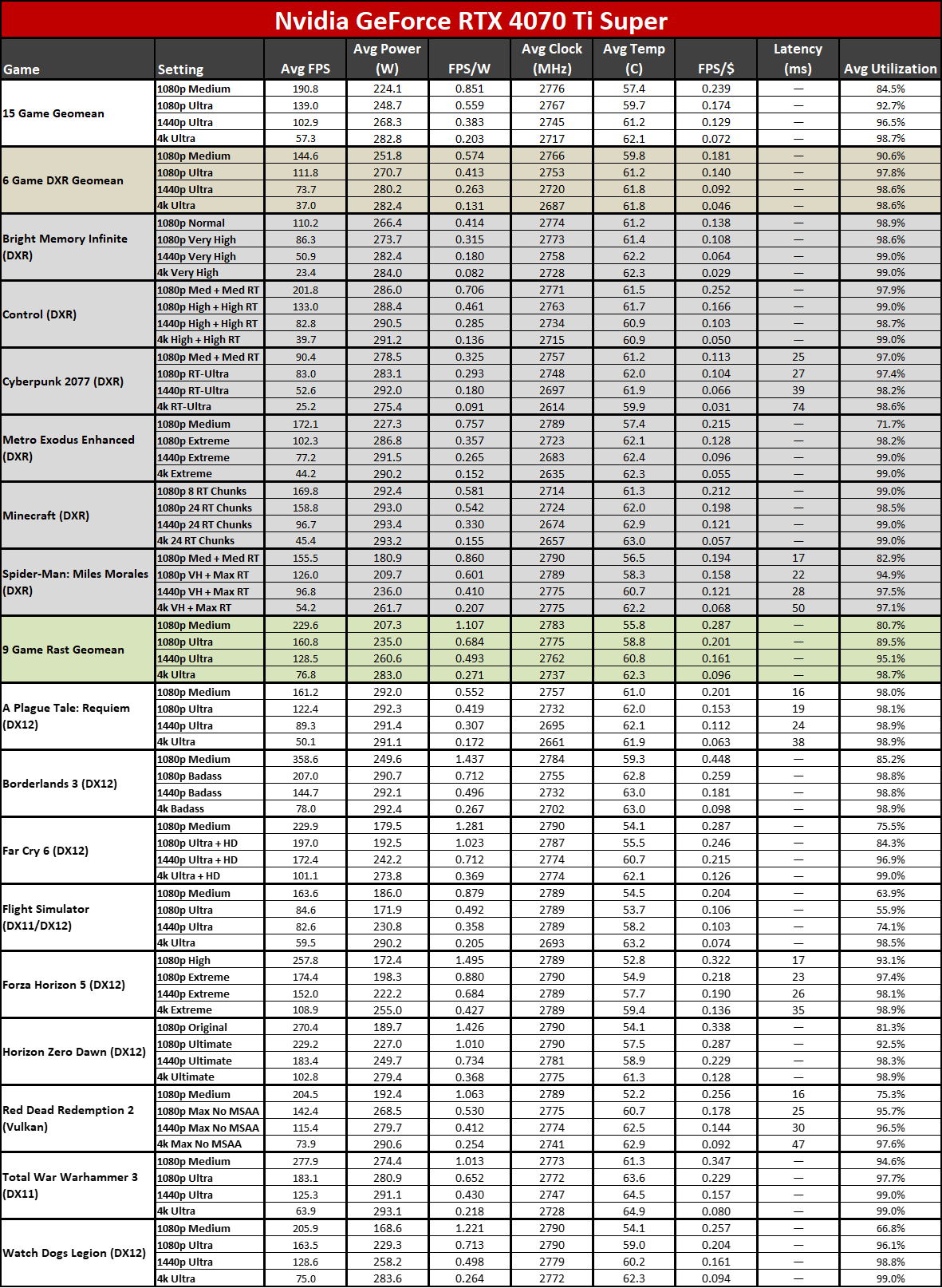
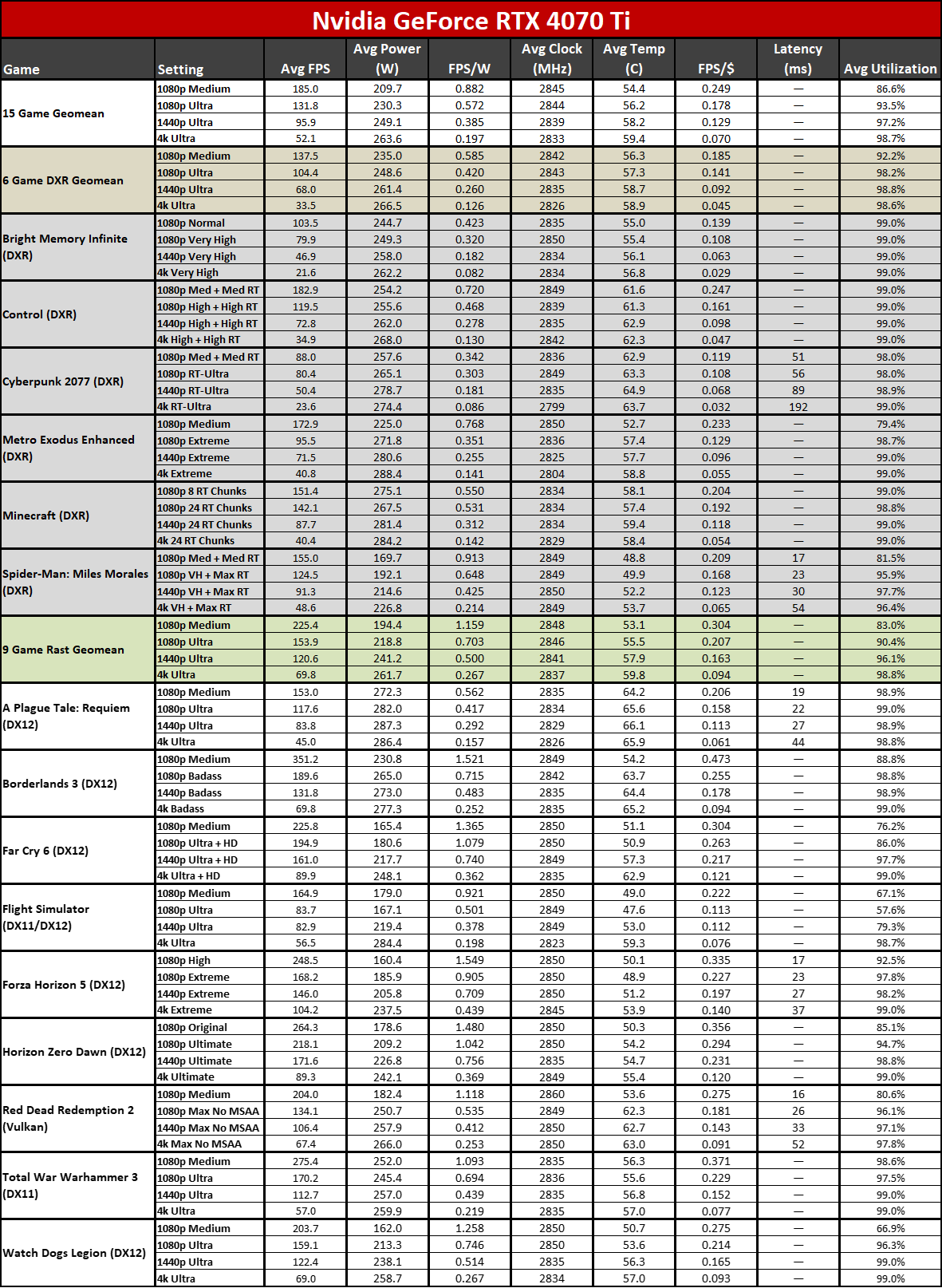
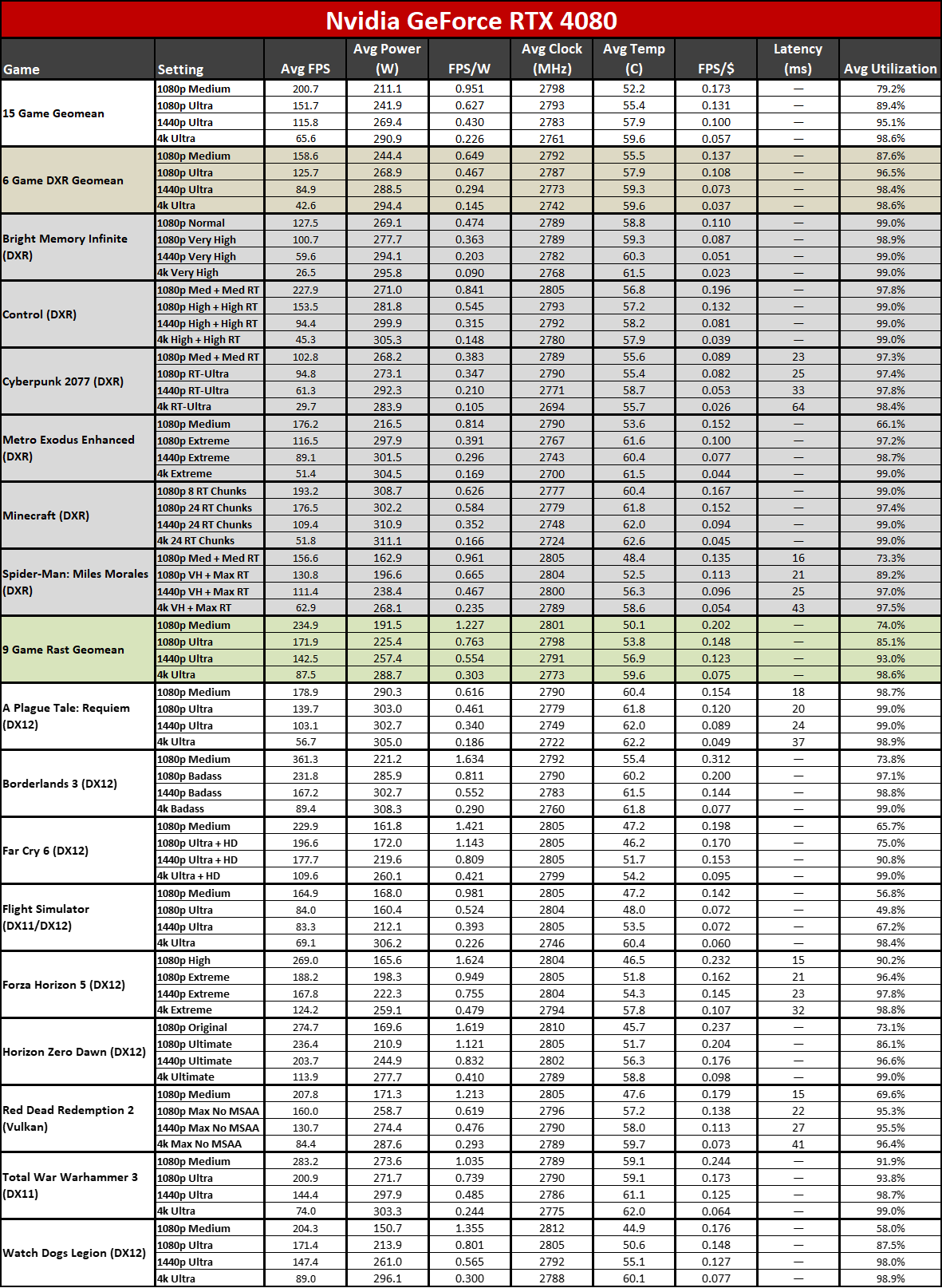
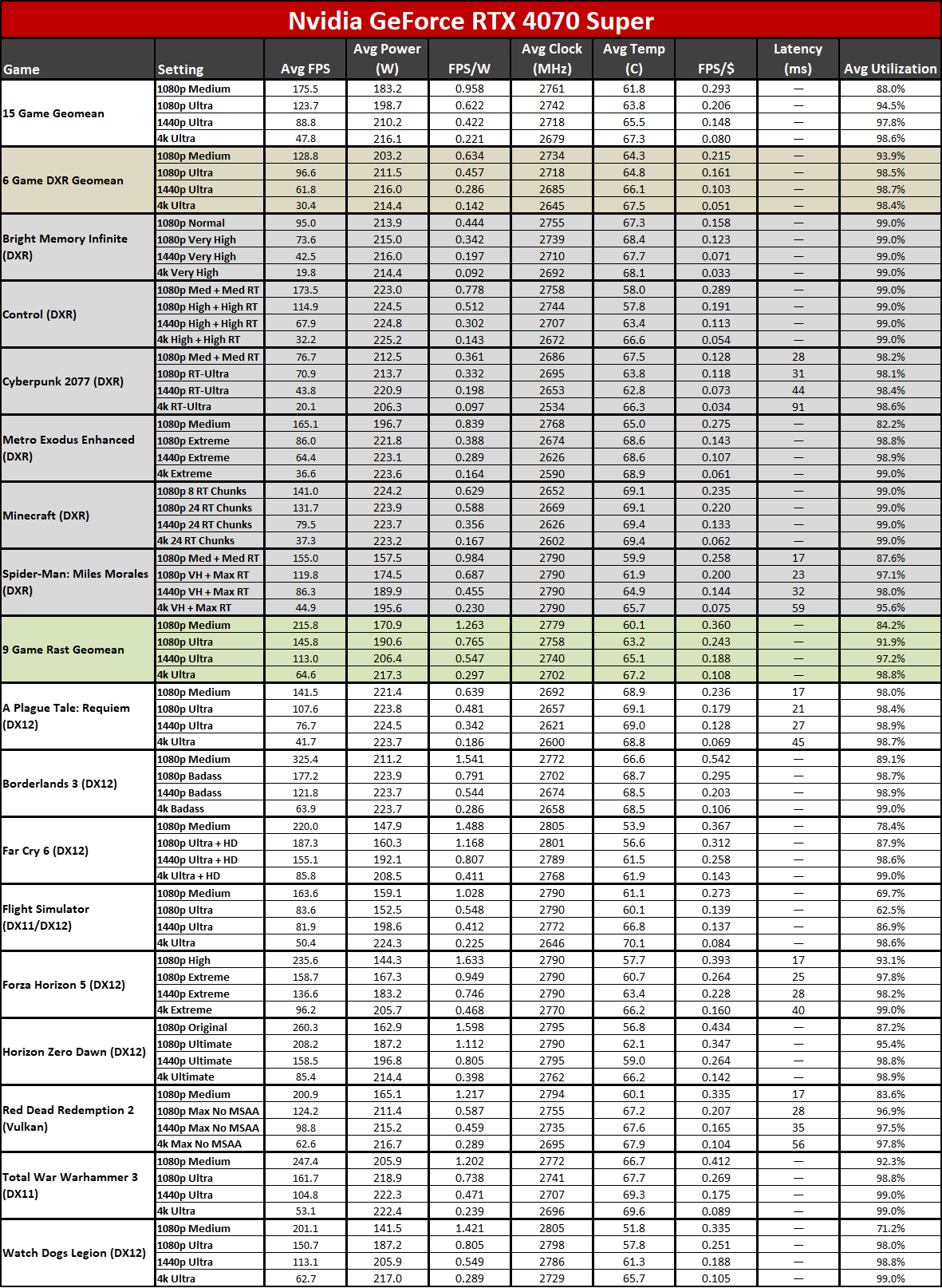
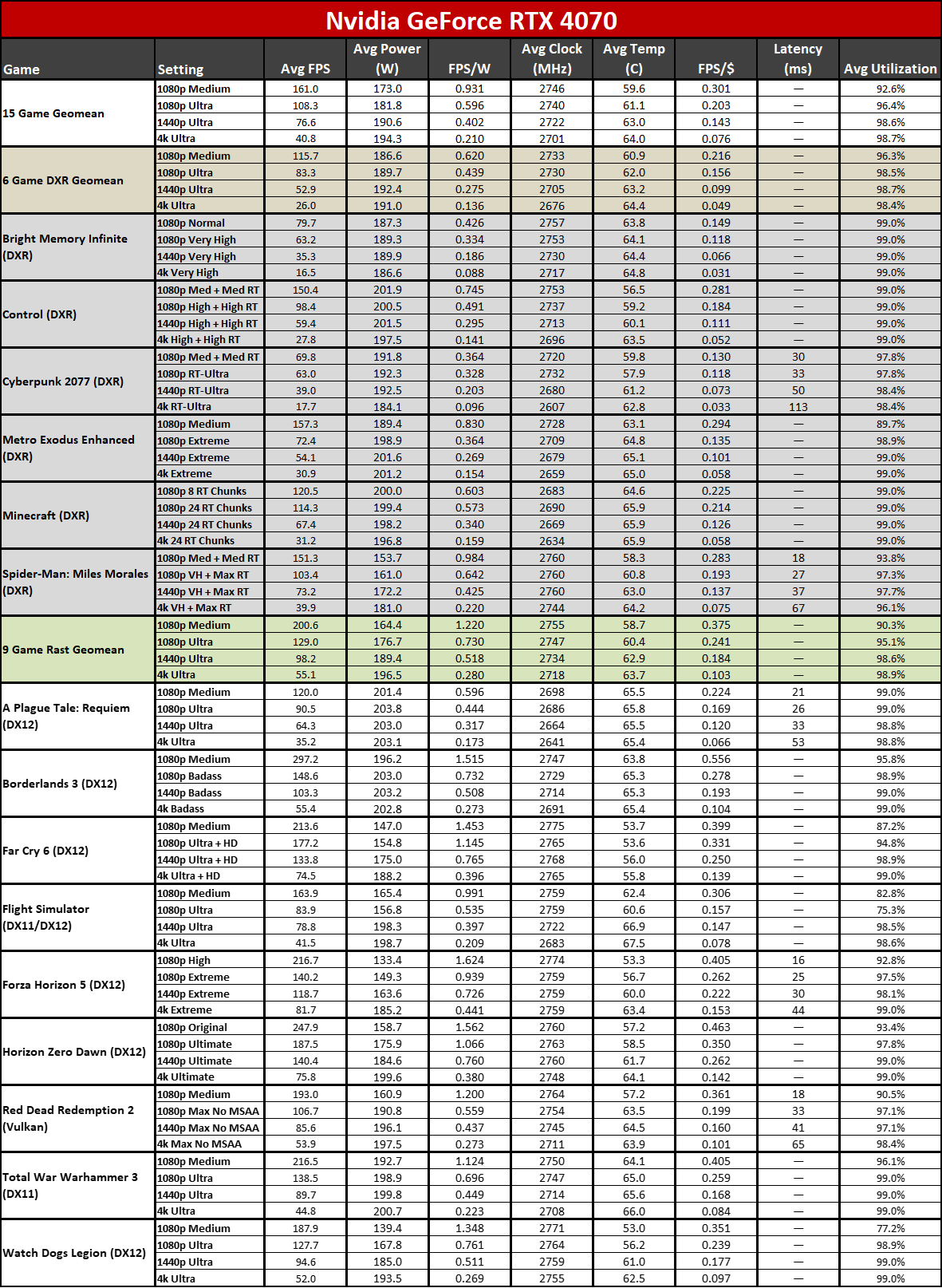
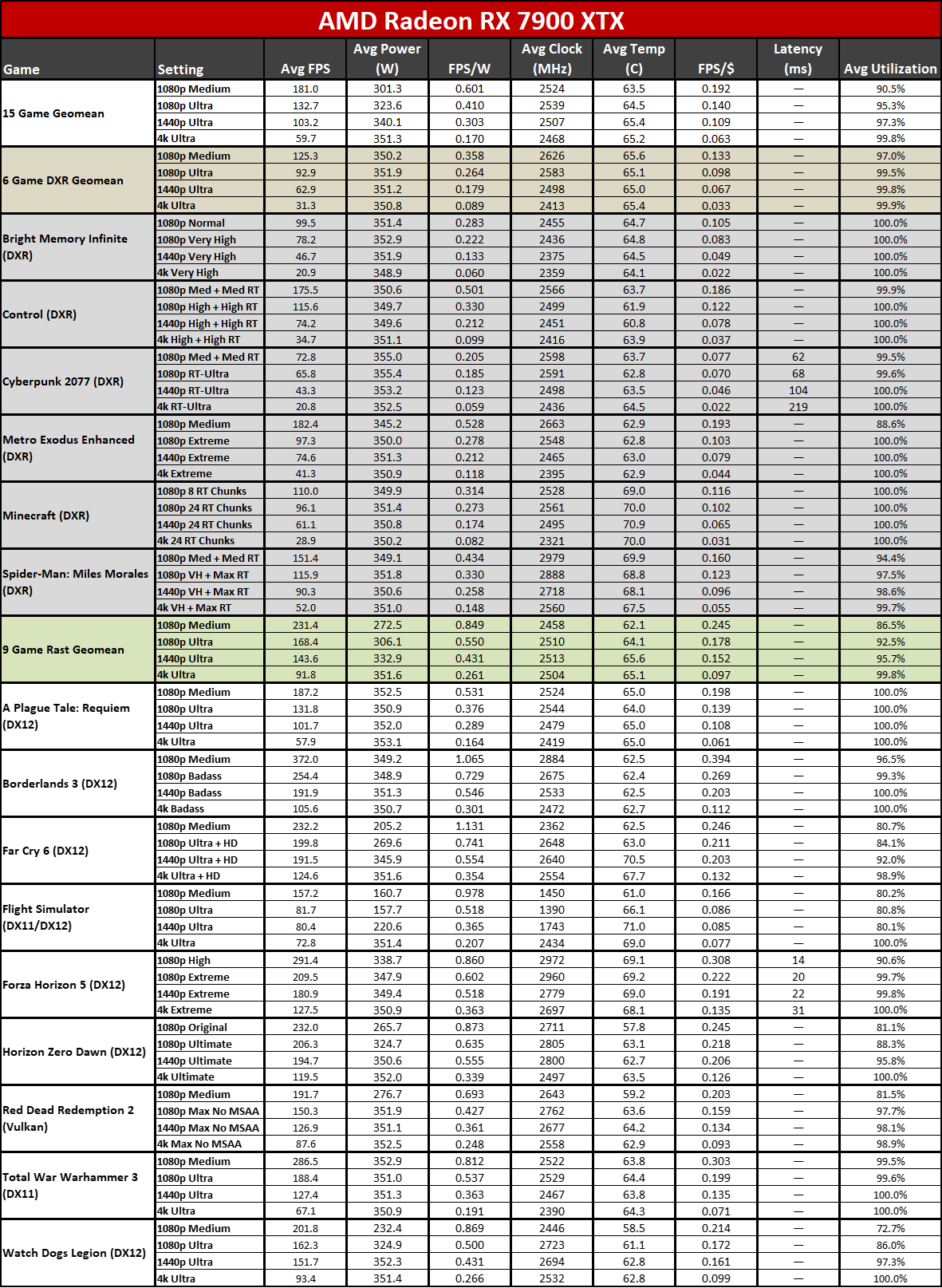
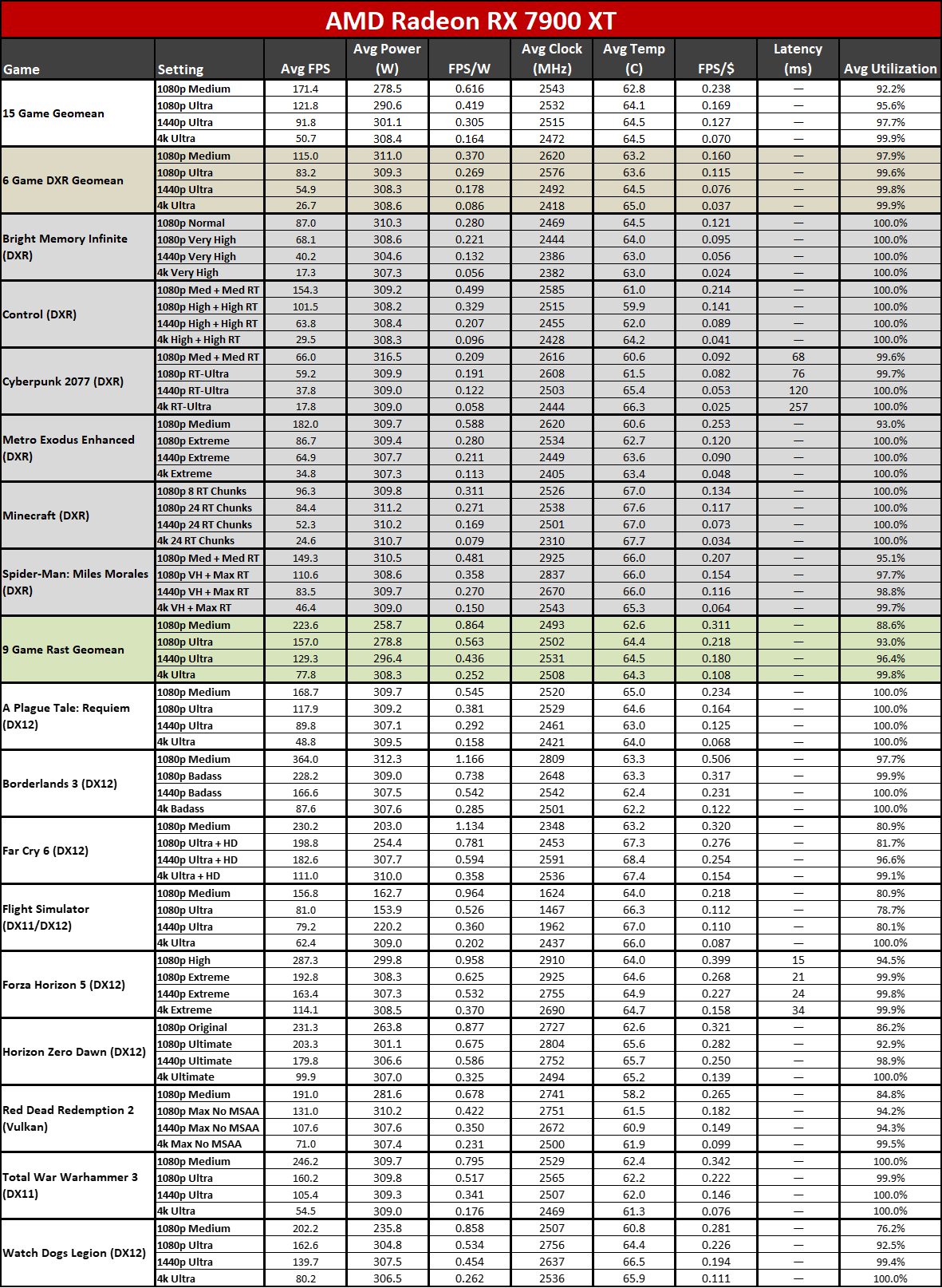
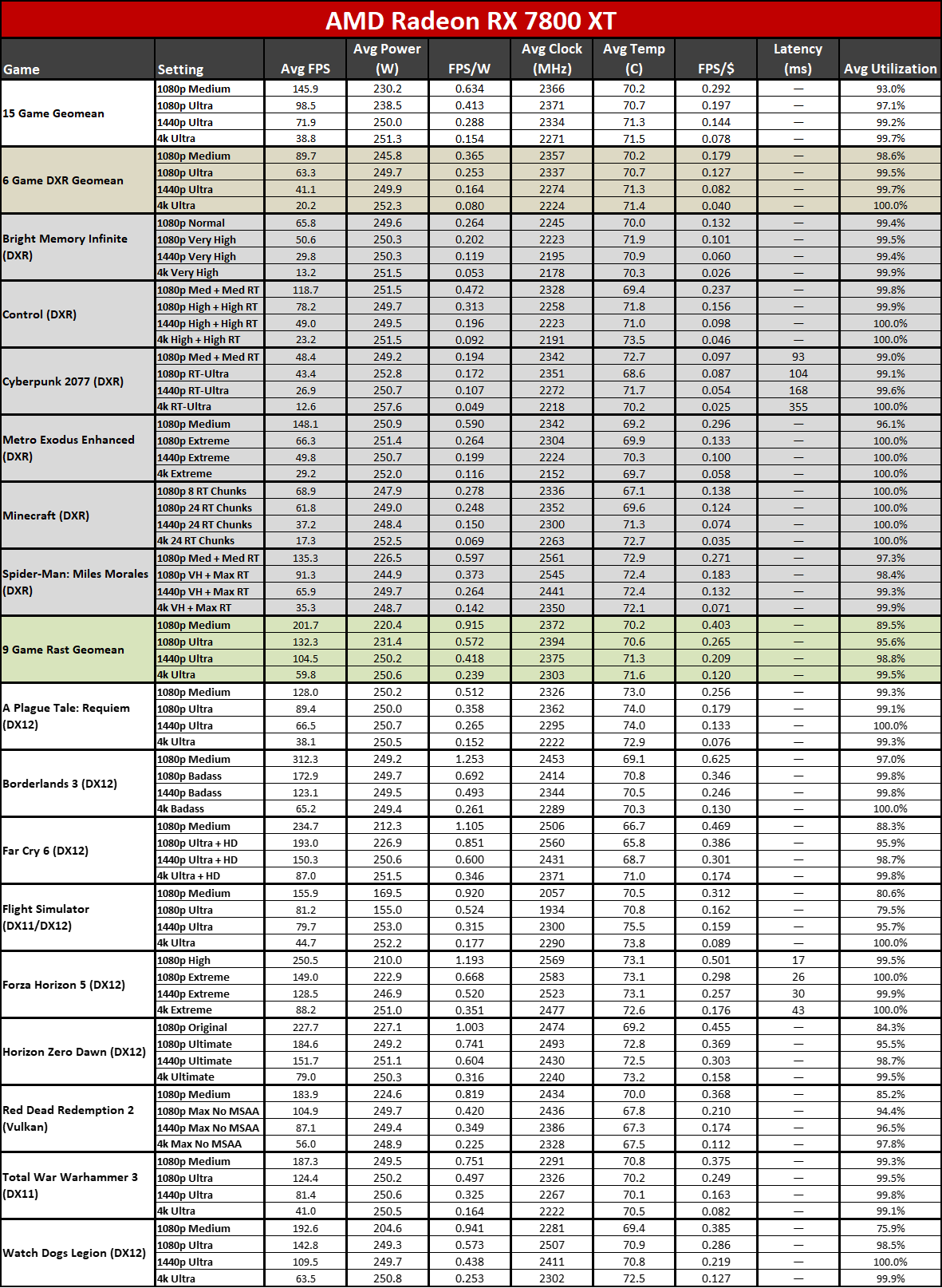
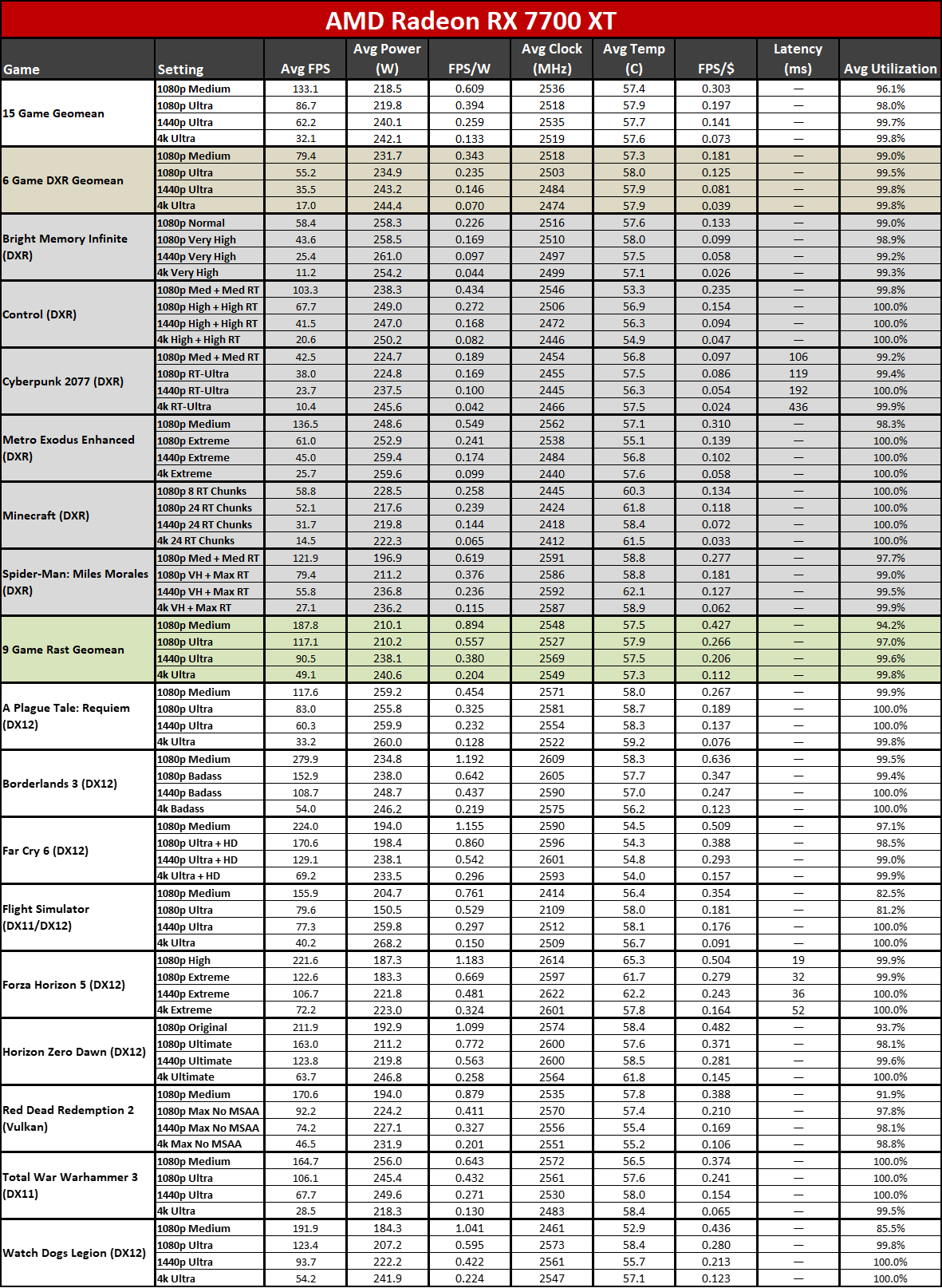
For those who like to look at the finer details, we've provided the above tables showing all of our gaming benchmarks, which include FPS/$ and FPS/W metrics. We use the best prices we could find at the time of writing: $799.99 as the base MSRP for the Asus card and $849.99 for the PNY Verto OC — though note that both are currently out of stock at Newegg, Amazon, and the other places we checked.
As noted already, the PNY card ends up being more efficient than the Asus card, though it's not quite able to match the 4070, 4070 Super, or 4080 Founders Edition cards that we've tested.
FPS/$ is a different story. Paying $50 extra represents a 6.25% price increase relative to the base model $800 cards. Since you're only getting 2% more performance, give or take, that means it's a "worse" overall value. But of course it's not just about the performance, and many a gamer has willingly paid extra to get a card aesthetic that they like.
- MORE: Best Graphics Cards
- MORE: GPU Benchmarks and Hierarchy
- MORE: All Graphics Content
Get Tom's Hardware's best news and in-depth reviews, straight to your inbox.
Current page: PNY RTX 4070 Ti Super Verto OC: Power, Clocks, Temps, and Noise
Prev Page PNY RTX 4070 Ti Super Verto OC: 1080p Gaming Performance Next Page PNY RTX 4070 Ti Super Verto OC: Cool as a cucumber
Jarred Walton is a senior editor at Tom's Hardware focusing on everything GPU. He has been working as a tech journalist since 2004, writing for AnandTech, Maximum PC, and PC Gamer. From the first S3 Virge '3D decelerators' to today's GPUs, Jarred keeps up with all the latest graphics trends and is the one to ask about game performance.
-
Amdlova Two days to say the name of graphics.Reply
Because the name will sell like hot cakes.
Like the time when you have a simple model...
Now you have tier 1 2 3 4 5 lol -
Notton So it's US$50 extra for an average of 1-2 fps increase.Reply
And, okay, it runs about 8-10C cooler... on a card that already runs at a very cool 60-62C
Just why would anyone buy this? -
JarredWaltonGPU Reply
Da bling, man! How can you forget the bling? :ROFLMAO:Notton said:So it's US$50 extra for an average of 1-2 fps increase.
And, okay, it runs about 8-10C cooler... on a card that already runs at a very cool 60-62C
Just why would anyone buy this?
It's not just lower temps, but also slightly lower noise. So, noise, temps, and RGB are why anyone would buy this. Are those good enough reasons? Probably not for a lot of people, but I'm sure a few will bite. -
randomnorthern Reply
Too have a cool card that can run very quiet obviously. Mine runs under 50C under full load with only 120-160 watts. And it literally was the cheapest card here of them all.Notton said:So it's US$50 extra for an average of 1-2 fps increase.
And, okay, it runs about 8-10C cooler... on a card that already runs at a very cool 60-62C
Just why would anyone buy this?
